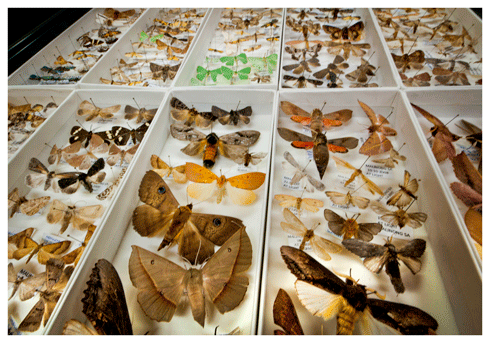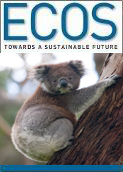
|
Published: 8 April 2013
Capital habitat for biodiversity research centre
A new Centre for Biodiversity Analysis based in Canberra will help Australia harness advances in biological sciences to inform better environmental management decision making by policy-makers.
The Centre is a joint initiative involving CSIRO and the Australian National University (ANU).
‘The Centre is drawing on CSIRO and ANU’s world class expertise, and harnessing new and emerging technologies in biodiversity science to improve our knowledge of Australia’s biodiversity and enable governments and conservation NGOs to translate policy into meaningful actions,’ said Professor Craig Moritz, director of the new centre.
‘It’s estimated that Australia is home to over half a million unique living species, many of which are found nowhere else on Earth, but of these only about one-third are known to science.
‘Improved knowledge of Australia’s biodiversity – how many species, where they are, and how they evolve across environments and through time – will be especially important to ensure sustainable development and production, to maximize ecosystem benefits, and to protect our unique diversity in the face of rapid environmental change.
‘The centre will promote collaborative biodiversity science by hosting conferences and workshops, forming ANU-CSIRO working groups, supporting collaborative projects, connecting students and researchers with managers and policy makers, and facilitating the collation and connection of biodiversity information in the ANU-CSIRO Canberra Precinct.’
The centre is a step towards the development of a Canberra Global Research Precinct focused on plant and environmental sciences. Building on CSIRO-ANU collaboration, the precinct will utilise its location in the national capital to promote the uptake of research outputs by government agencies.
The centre hosted an inaugural conference that brought together Australian and international biodiversity scientists to discuss recent advances in biodiversity genomics.
‘Genomics is an exciting and rapidly expanding field that has the potential to significantly improve the efficiency of environmental assessments and monitoring, and the speed at which new species can be identified,’ said Professor Moritz. ‘It is also providing important new insights into the ability of species to adapt to climate change.’
Conference presentations included:
-
How genome sequencing technologies are helping in the fight against Tasmanian devil facial tumour disease: Devil facial tumour disease (DFTD) is threatening the iconic Tasmanian devil with extinction in the wild within the next few decades. Genome sequencing has highlighted the low levels of genetic diversity within the population and the importance of selecting individuals for the careful maintenance of genetic diversity within conservation insurance colonies. Genomic technologies are allowing rapid progress to be made in our understanding of the disease.
-
Combining genomics and evolutionary theory to understand how species respond to climate change: There has been much recent debate about the potential for evolutionary changes to enable species to adapt to the stressful effects of climate change. Professor Hoffman will discuss the current body of evidence supporting this, how genomic techniques can provide valuable insights into evolutionary adaptation, how evolutionary approaches can be used to predict future changes in biodiversity, and what the implications are for conservation strategies.
-
Mining genomic data from museum collections to understand how species change over time: Biological collections-based research is poised at another exciting transition because of research avenues made possible by the tools of genomics. Traditional museum collections are large repositories of dormant genetic data. This treasure trove of taxonomic, spatial and temporal data is now within reach thanks to genomic technologies. The insights gained are providing valuable contributions to our knowledge and, in-turn, the preservation of Australia’s biodiversity.
Source: CSIRO




